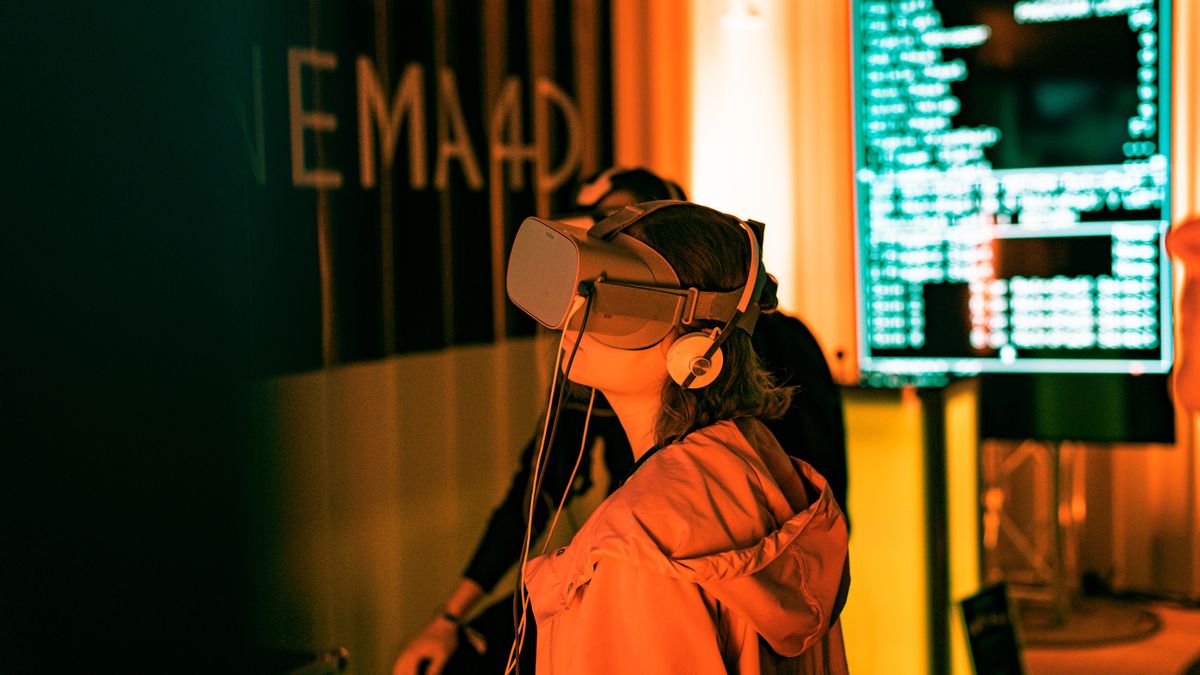Designing the virtual space

Imagine, wearing your VR set: walk through the streets of the virtual city to the virtual supermarket. Buy your virtual groceries, and pay with real money. Afterward, your doorbell rings and your groceries are at your doorstep.
The world is shifting. Everyone can sense it, but a few of us know what to expect. Evidently, we are diving more into the digital world, and soon enough, the lines between the real and the virtual will become blurry. This statement is not fictional nor meant to scare you. It could be an excellent opportunity to design the world we desire on an empty slate and use the virtual model to improve our tangible canvas.
With big corporates like Meta and Apple promoting the virtual experience, and the popularity of VR games, people seem to be more immersed than ever in the digital landscape.
The virtual space: What does it look like?
A world you can access from your setup: buildings, public spaces, and fellow human companions. A place where you socialize, entertain, invest, and wander. It’s a tridimensional digital world, fed by virtual reality setups that provide a hyper-realistic virtual experience. Metaverse, Sansar, and many more promote these man-made universes.
Speaking of the architecture of these universes, or aesthetical aspect: It can look and be however we conceive it to be. But we should know that how we design it could eventually impact us. Considering that VR it’s an in-brain-to-machine experience and that this virtual space would make part of our lives, we must understand the effect that it could have on us and our space perception.
Space cognizance is a mental procedure where the brain makes sense of its surroundings to navigate using its own cerebral compass and mental map. The VR experience could stimulate the same reaction and thus introduce the user to a new set of proportions and spatial parameters.
Prospects
The Covid-19 pandemic is a great conversation starter for the advantageous use of the virtual space. The imposed restrictions generated a state of skin hunger and the human yearning for social interactions.
Creating a virtual world where people can hang out and connect, the simulation of human touch by artificial physical stimulators. This would have made a great difference in the whole pandemic experience. It help people cope with physical restrictions and provides social closeness and solidarity. “An alternative universe for when the original is in crisis.”
This technology also brings hope to people with disabilities. It creates a world that’s adaptive to their spatial needs and allows them to experience beyond their physical limitations.
Architecture between the tangible and the digital
The prospects of these technologies could be immense for architecture and spatial configuration. The one-scale virtual model could be used to improve concrete buildings. It makes it possible to study human behavior within a space and its interaction with it before it is built.
Also, designing normative spaces within the virtual world provides a more realistic experience that doesn’t contradict the spatial acquisitions of the brain. Instead, it reinforces them and makes it easier to navigate them.
Concerns
To live in a digital space is bound to raise some concerns. These latter are related to the extent we are willing to immerse ourselves within it. This requires the study of the ethical aspect of the digitalization process of human social life.
One of the expected downfalls is the high dependence on these alternative universes, and the disassociation from the real world. Like in the movie “Inception,” having a world tailored to your fantasies could be addictive. This dictates the importance of regulations and ethical coding of such spaces for the way it could alter our subconsciousness and attachment to the real world.
Sociology conducts that we are social beings by nature. We socialize within space. The change in the nature of this space suggests a change in our own behavior. So we must ask: is virtual space going to eventually alter our nature? Is the machine going to be a mandatory third part of our human social interactions?